Safe, Quick, Economical
Dutch railway posters of the 1930s
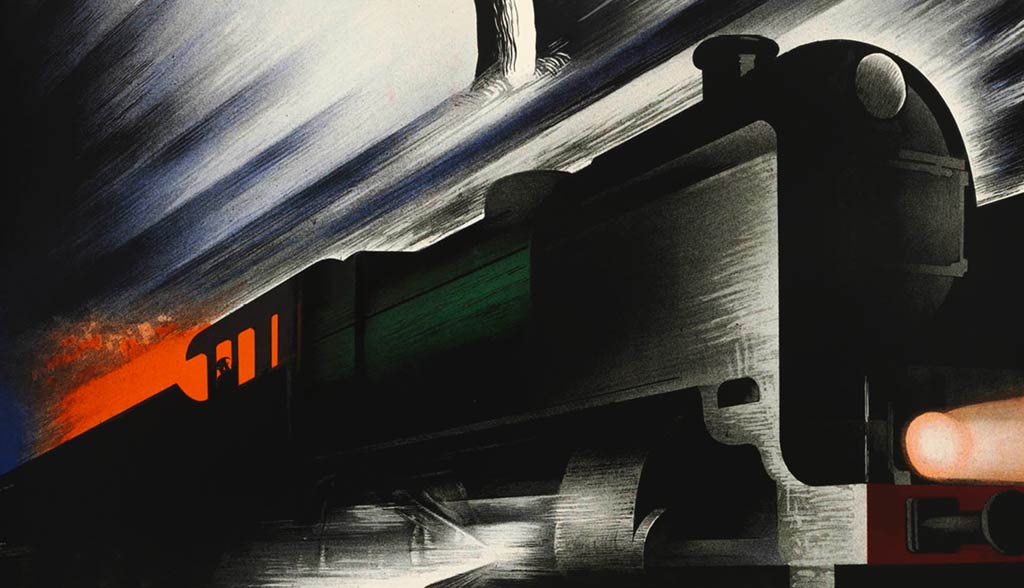 Nederlandse versie
Nederlandse versie
After the formation of the Nederlandsche Spoorwegen (Dutch Railways) as a collaboration between private railway companies around 1920, virtually no railway posters were issued anymore. Competition through advertising had become obsolete. Only with the economic crisis the railways started recruiting new travelers by advertising discount tickets and day trips.
This coincided with the popularity of the French designer Cassandre, who put the advertising industry on a new track with his stylized posters of the Nord Express and Étoile du Nord. Around 1930 he began working for Dutch companies such as the Holland America Line and Philips. The influence of Cassandre, together with the railway's advertising campaigns, resulted in a series of beautiful posters in the 1930s.
Nicolaas van de Vecht
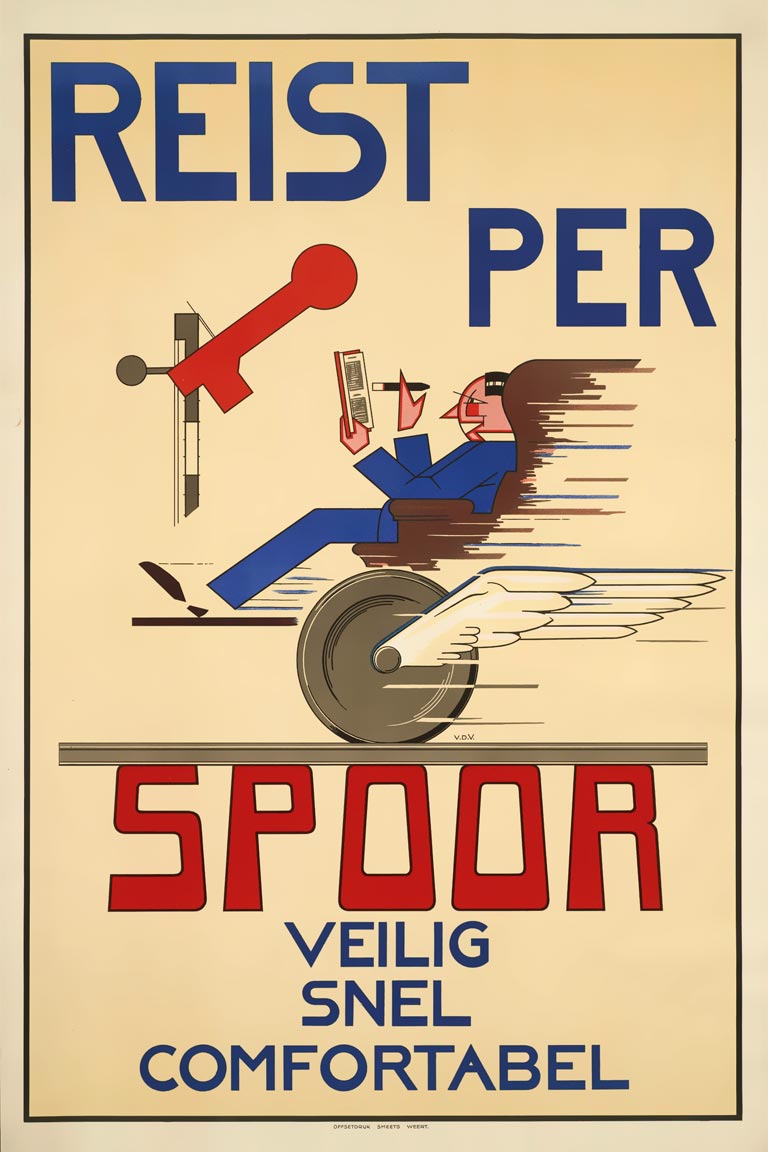
The Dutch Railways' tagline Safe, Quick, Economical became very well known in the 1930s and would remain in vogue after the war. There is an early poster from around 1932 showing a different slogan: Save, Fast, Comfortable. Apparently Economical proved to be the better slogan in the Netherlands.
The three promotional terms were depicted by a semaphore in safe position, a winged wheel and a traveler with newspaper and cigar reclining on a train couch. The parts are remarkably loosely interconnected. The poster was just signed v.d.V. — this must be Nicolaas van de Vecht (1886-1941), who also monogrammed his book illustrations this way. Trained at the Amsterdam School of Applied Arts, he was not only a lithographer but also a typographer and watercolorist.
Agnes Canta
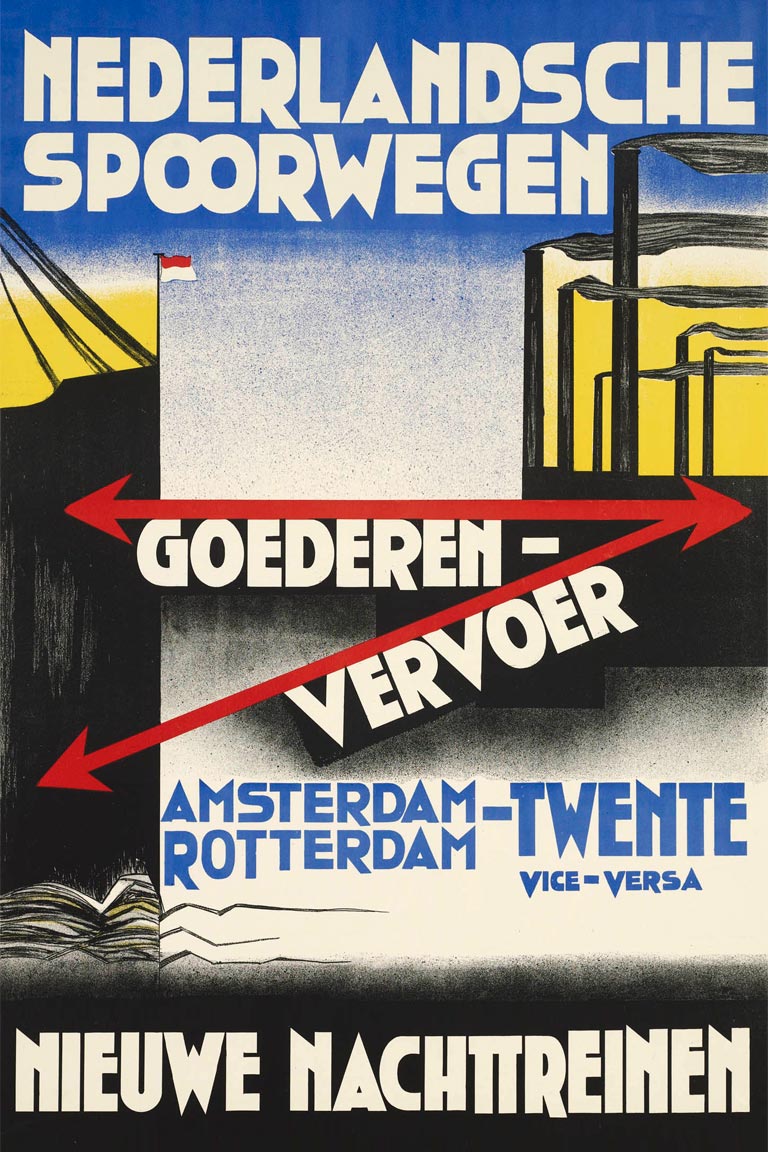
The only woman who designed posters for the Dutch Railways before WW II was Agnes Canta (1888-1964). After her training at the Academy of Fine Arts in Rotterdam she worked as a graphic artist, book cover designer and painter. She painted landscapes, still lifes, animals and caricatures.
In the early 1930s Canta designed many posters for the Utrecht Jaarbeurs fair. During the same period she was commissioned by the Dutch Railways to promote night trains to the east of the Netherlands — for freight, that is. As the poster shows, the ports of Amsterdam and Rotterdam were directly connected to the Twente textile mills. The powerful typography and almost primary colors render a robust result.
Willy van de Poll
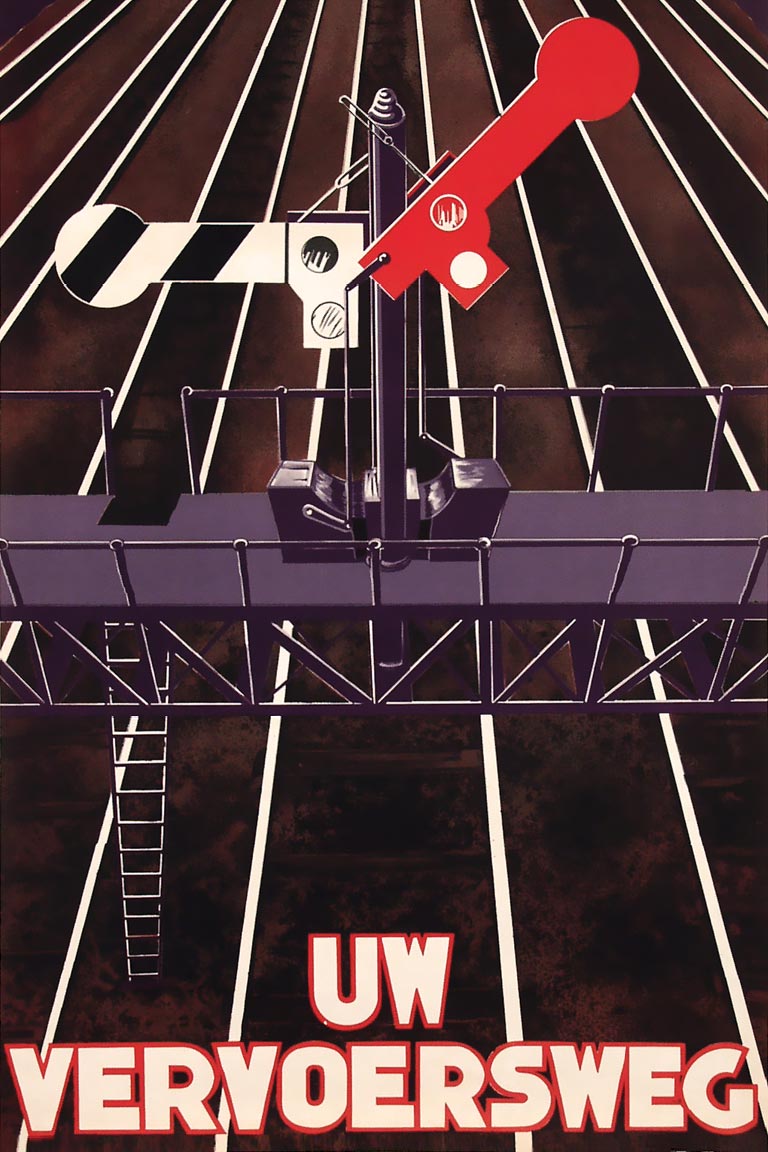
In 1932 the Amsterdam commercial artist and photographer Willy van de Poll (1893-1951) created two railway posters with similar dark colors, but far apart in substance. One shows an almost abstract image of modern rail technology. On the other poster, which advertised night transport, Mercury, the god of trade, stands on a locomotive with his caduceus. The designer reverted back to 19th-century railway symbolism in this case.
Van de Poll used photos as a starting point. In the magazine of the Advertising Society he called his camera his associate, assistant, right hand and travel companion. For Your Way of Transport he photographed the western signal bridge of Amsterdam Central Station. On the 'primal image' for Overnight by Rail a railway employee posed on the locomotive as Mercury, but not naked!
Fré Drost
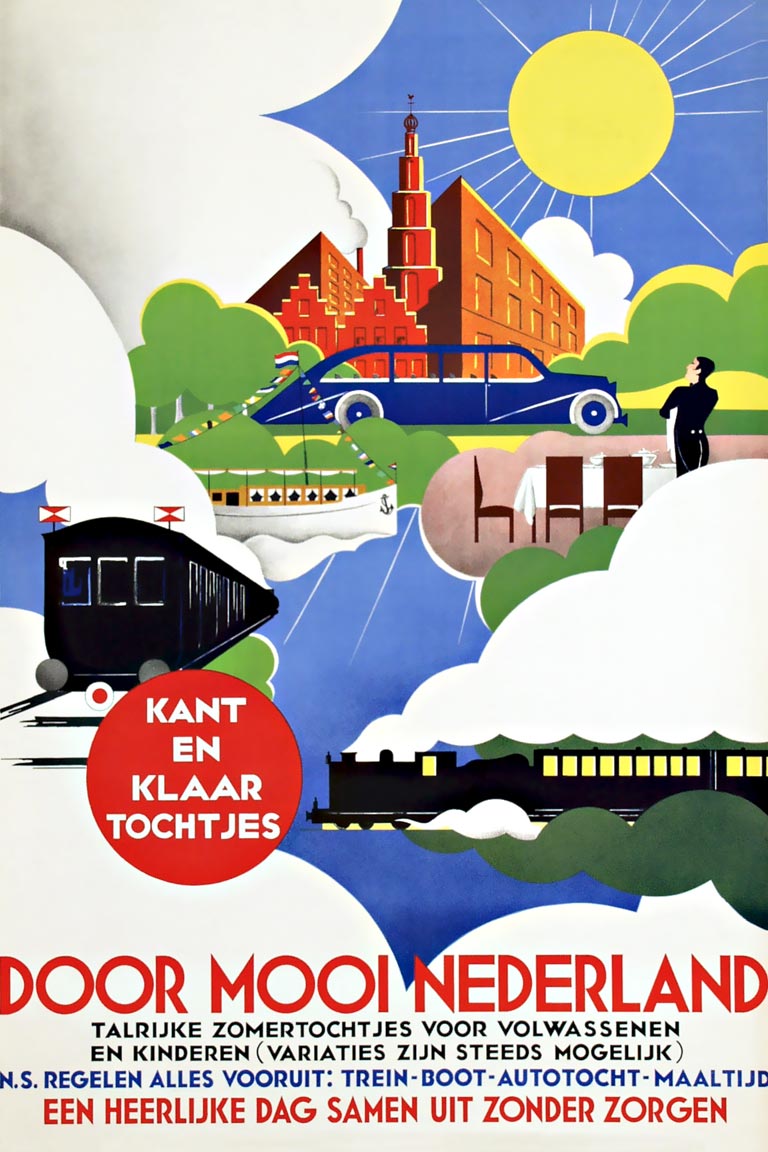
Groningen-born Fré Drost (1907-1987) was trained as a drawing teacher and skilled himself in commercial graphics. Around 1930 he became an illustrator and designer at the firm Joh. Enschedé in Haarlem. His posters for flower shows were widely known. Besides his work as a graphic designer Drost also created drawings, paintings and watercolors.
In 1935 Drost made a cheerful railway poster about ready-made trips through beautiful Holland under the motto "A lovely day out without worries". Different modes of transport, such as train, boat and bus, are shown in a sunlit landscape. A year later a modified version appeared with a more elaborate bus and even some airplanes.
Jean Walther
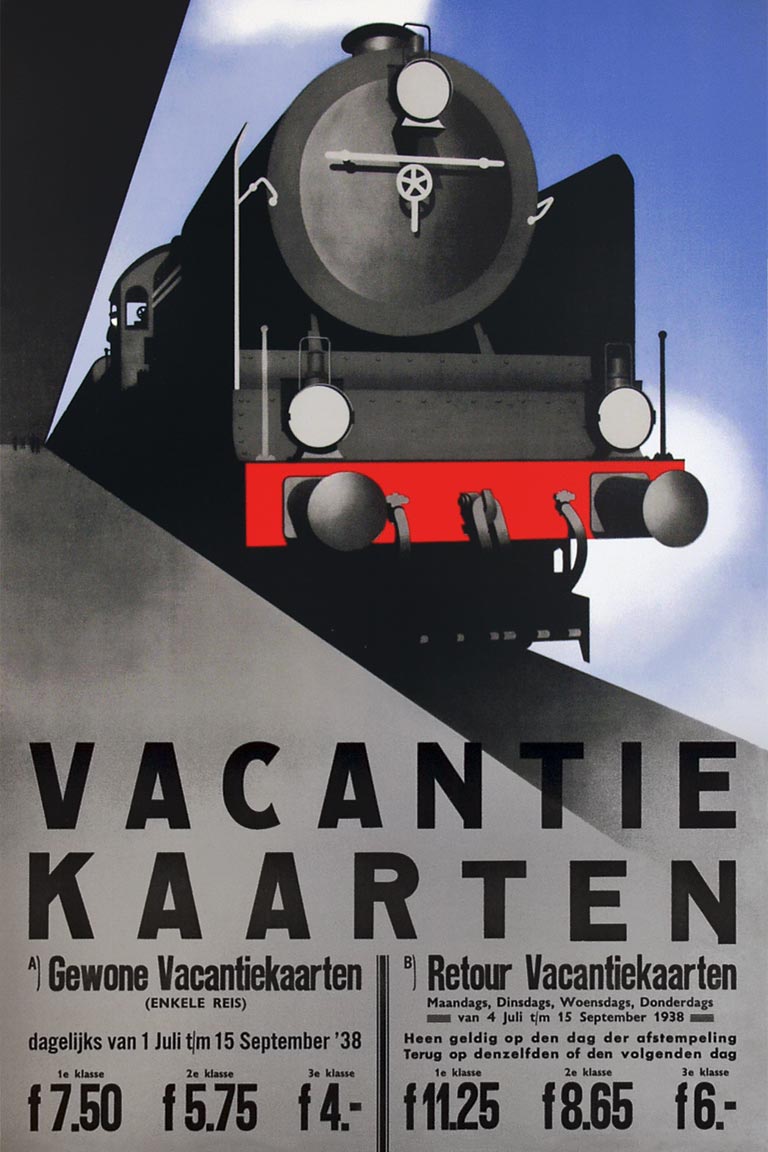
The Swiss graphic artist Jean Walther (1910-1968) moved to Amsterdam in 1934 and would leave for the United States at the beginning of the Second World War. He was a student of Cassandre and adopted his sleek, objective style. Walther's shipping, aviation and railway posters reflected the power and speed of transportation.
On the poster for holiday tickets, which first appeared in 1936, an express steam locomotive of the NS 3900 series is the main motive. It has characteristic smoke deflectors. The almost frontal view was probably inspired by the famous French Exactitude poster, created by Pierre Fix-Masseau in 1932.
Kees van der Laan
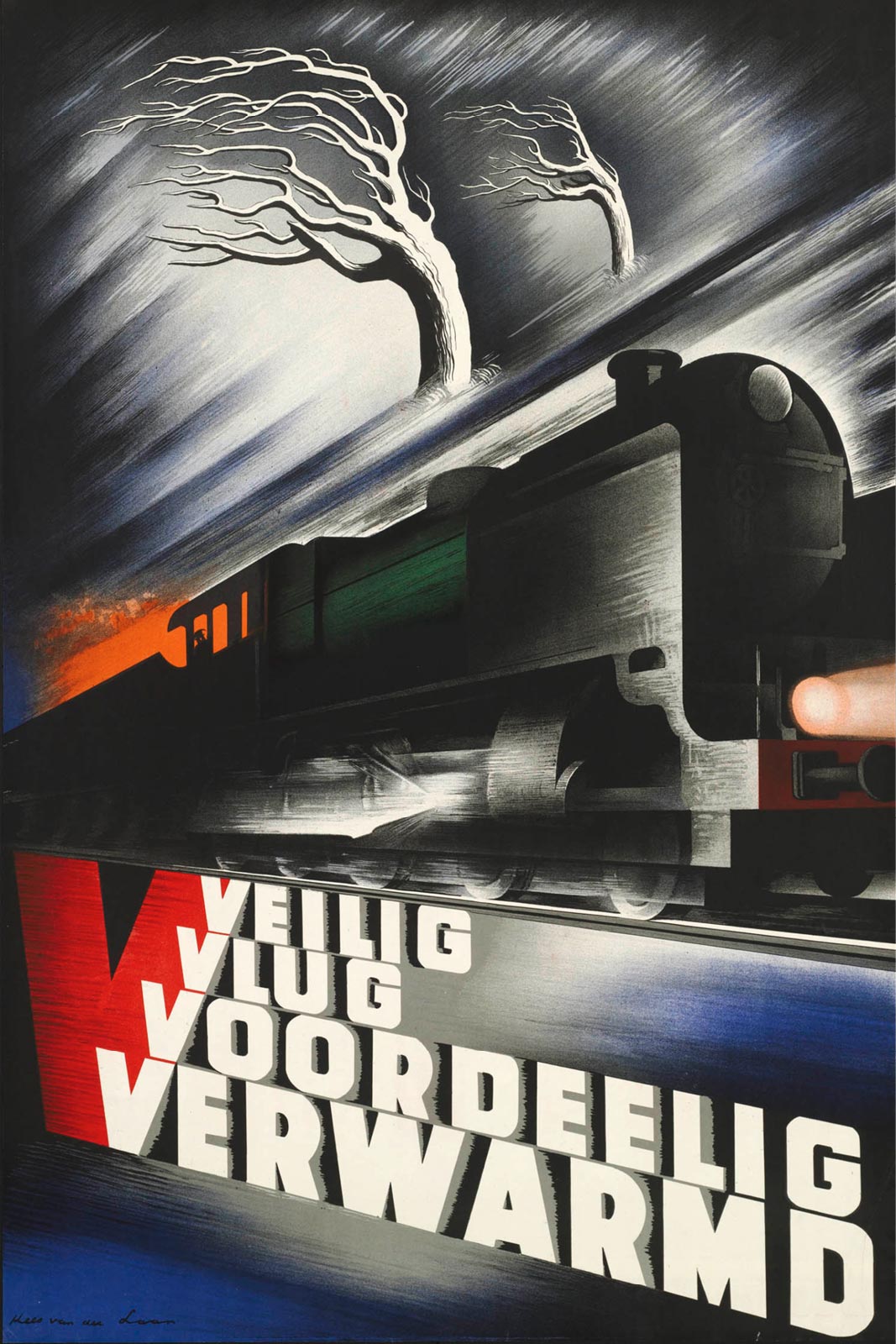
"He has undoubtedly learned a lot from Cassandre, but has proved to be an artistic and intelligent pupil," Cornelis Veth wrote in a Dutch newspaper about Kees van der Laan (1903-1983). This self-taught Dutchman had gained experience in Paris between 1924 and 1927. He designed posters for the Dutch Railways, the Zeeland Steamship Company, the National Flight Academy and Ford. Van der Laan was also an expressionist painter and sculptor.
On his poster for winter travel, image and text are neatly aligned. To the tagline Safe, Quick, Economical the word Heated was added. A train hurtles along trees warped by wind and speed. The glow of the locomotive in the night emphasizes the warmth inside the train. It was one of the last Dutch posters with a steam locomotive.
Emmanuel Gaillard

The French Emmanuel Gaillard (1902-?) settled down in Amsterdam in 1927. He worked at Van Leer & Co printers as a poster designer for Philips, Van Nelle, large shipping companies and the Dutch Railways. In 1939 he would return to France to focus mainly on cinema posters.
In 1938 Gaillard designed a poster to mark the completion of the electrification of the so-called central network. It linked the main Dutch cities on a regular timetable and had Utrecht as its center. Depicted is the streamlined electrical trainset Mat 36, which was essential for this network. The fading towards the back indicates speed.
Frans Mettes
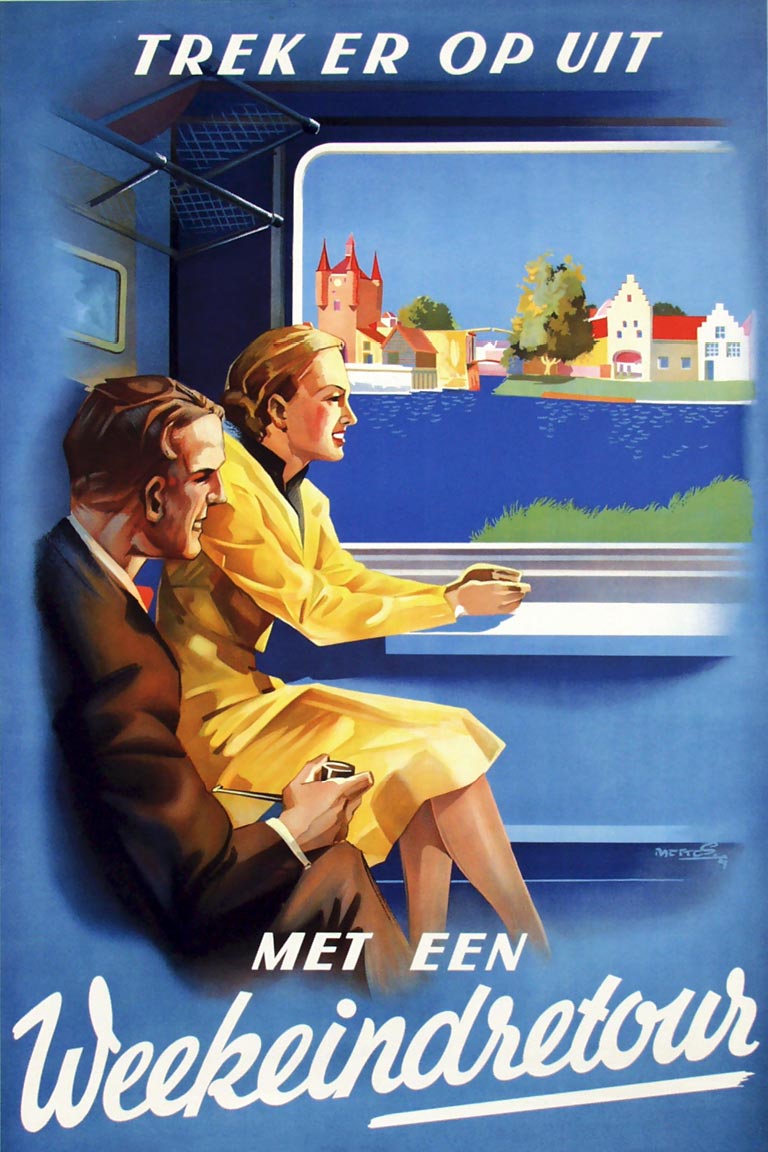
Venture out with a weekend ticket, ran the appeal by the Dutch Railways as designed by Frans Mettes (1909-1984). The posters by this self-taught designer are recognizable by their strong composition and striking use of color. Especially after the war his work for Heineken, Belinda, Ritmeester, KLM and the Dutch Railways would become iconic. He became the most prolific Dutch poster maker.
The Dutch Advertising Revue of 1939, however, judged the weekend ticket poster "a bit too colorful" and thought the landscape behind the window was more Belgian than Dutch! "Moreover, in our opinion it would have been commendable to keep the figures of the two travelers more muffled," the magazine wrote.
Joop Geesink
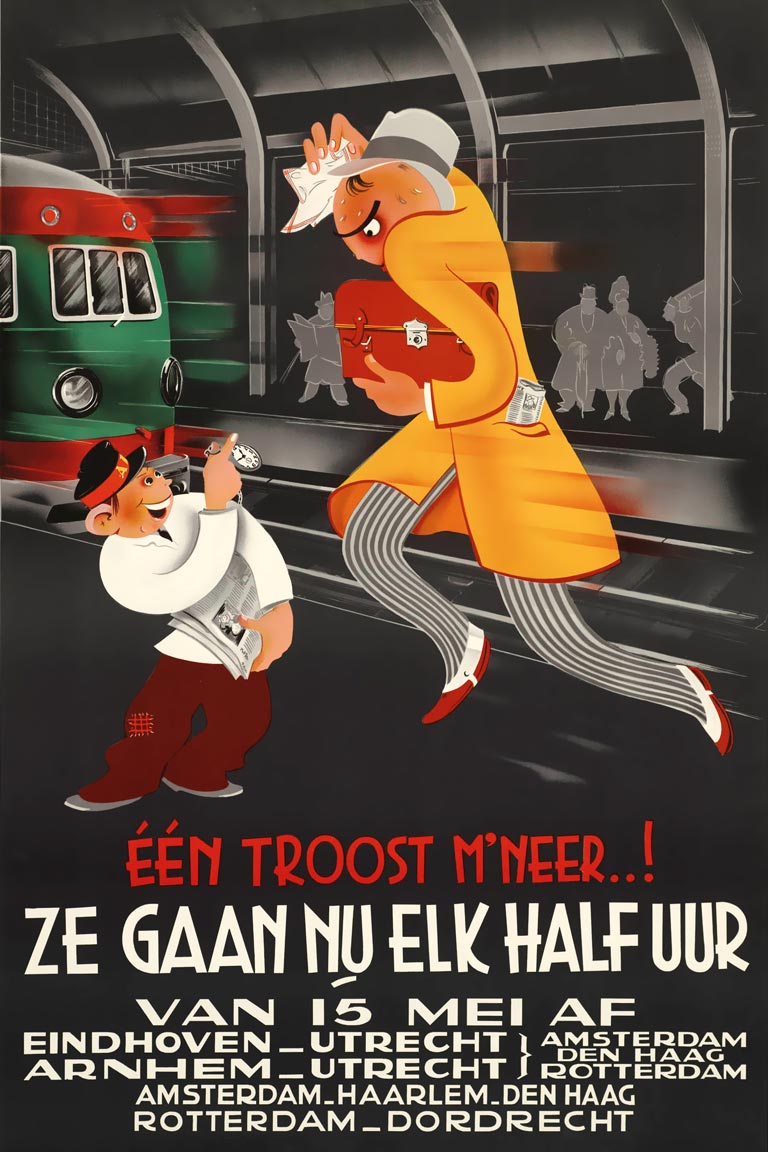
The electrification of the central network enabled a strictly regular timetable. After an hourly service a half-hourly service was introduced by the summer of 1939. Joop Geesink (1913-1984) created a humorous poster for the occasion. A traveler arrives in a hurry and misses the train. A newspaper vendor at the platform shouts at him: "One consolation, Sir... They run every half hour now!".
Advertising man Joop Geesink had started his career as a set designer and later became known for his animations and puppet films. His 1972 creation Loekie the Lion, a puppet animation serving as an intermezzo between television commercials, would become familiar to all Dutch.
Frans Waslander
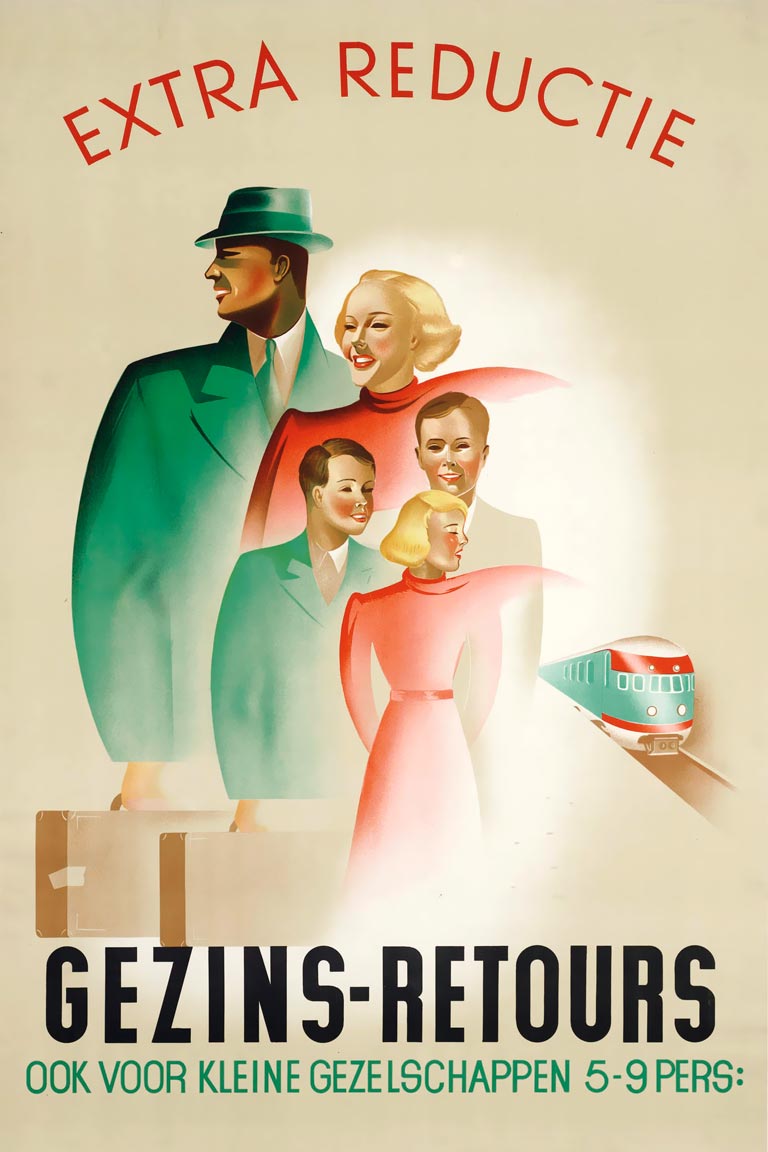
In the late 1930s the Dutch Railways introduced several tickets at attractive rates. After special evening, weekend and summer tickets the family ticket followed to meet the needs of large families to venture out.
"At first sight, one would like to add a subtitle to this poster: the mannequins on a journey," the Dutch Advertising Review wrote in 1939. This was not a negative remark as it was said to make the poster "powerful". In 1935 another magazine had called Frans Waslander (1913-1977) a promising young artist with a special technique. "He works with soft, light gradient tints and gives his work the charm of sophistication." Waslander was educated at the Amsterdam School of Applied Arts and had gained practical experience in England and Germany.